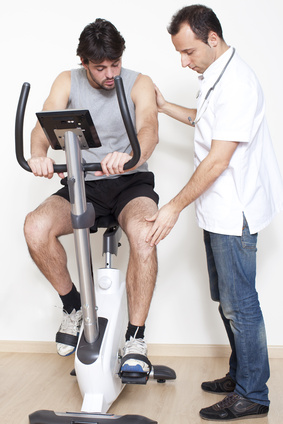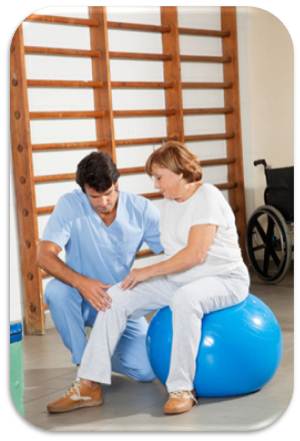
We will never settle for “average”. It is our promise to provide and advance superior physical therapy services while adding uniquely specific and related services to serve the our community and surrounding region with the utmost quality
Physical therapy is an essential part of joint replacement therapy. Depending upon the joint that has been replaced, patients will need to relearn how to stand, walk, lift or grasp objects. Physical therapy helps:
- Strengthen the muscles and ligaments around the joint
- Reduce scarring around the joint
- Promote mobility
- Regain full range of motion
- Ease pain
- Regain balance, coordination and functionality
An important part of the rehabilitation process with physical therapy will be the use of assistive aids for mobility and a physical therapist will show patients how to use them effectively. Individuals will learn new ways of performing everyday tasks and ergonomic adaptations that will make life easier during recovery.
People often assume awkward positions and behaviors due to the pain and mobility issues associated with a poorly operating joint. An important aspect of physical therapy is helping patients regain and maintain proper posture and relieve pressure on the neurological system that can impede recovery success.
Recovery typically requires two to four months following a joint replacement, depending on the patient and joint that was replaced. The goal of physical therapy will be for patients to improve their mobility by two weeks following surgery with a return to regular activities by 12 weeks after the procedure.
 The decision to have a joint replacement is a big step involving major surgery and significant rehabilitation times. Patients will need to work closely with their surgeon and physical therapist for a return to full functionality and the new lease on life that a joint replacement can provide.
The decision to have a joint replacement is a big step involving major surgery and significant rehabilitation times. Patients will need to work closely with their surgeon and physical therapist for a return to full functionality and the new lease on life that a joint replacement can provide.
Knee and hip joints make up the majority of replacements, but the ankle, elbow, shoulder and wrist joints can also be replaced. During the procedure, the damaged portion of the joint will be removed and replaced with a ceramic, plastic or metal device that allows the joint to work normally.
A number of conditions can cause deterioration of a joint or the surrounding cartilage resulting in pain and disability, the most common of which is osteoarthritis. Joint replacement is typically the final option when medication, physical therapy, or changes in lifestyle don’t provide sufficient relief from pain and the risk of disability.
Your physical therapy following a joint replacement will focus on pain relief and restoration of movement. Your body will need time to get used to the new joint and one of the best ways to accomplish that is through a physical therapy-based exercise program.
 Your individualized plan may include at-home exercises, along with therapeutic massage and hydrotherapy to promote movement and relieve pain. Electrical stimulation, ultrasound and manual manipulation may be employed to aid in the healing process and maintain mobility, along with cupping, acupuncture and dry needling to relieve pain.
Your individualized plan may include at-home exercises, along with therapeutic massage and hydrotherapy to promote movement and relieve pain. Electrical stimulation, ultrasound and manual manipulation may be employed to aid in the healing process and maintain mobility, along with cupping, acupuncture and dry needling to relieve pain.
Part of your surgical and rehabilitation strategy may include pre-surgical physical therapy to strengthen the body, particularly in the area in which the replacement will take place. Physical therapy prior to surgery is effective for speeding recovery time and reducing the need for post-surgical care, allowing you to return to your normal routine quicker.
Pre-surgical therapy provides you with the opportunity to make accommodations and changes at home that will be needed following the surgery such as shower benches or handrails in strategic locations, along with a long-handled grabber that will be helpful for reaching items.
Joint replacement therapy can give you a new lease on life with greater, pain-free mobility to enjoy a more active lifestyle. Physical therapy before, during and after a joint replacement will help you recover quicker, reduce the risk of potential complications, and help you return to your favorite activities.
